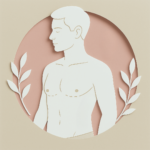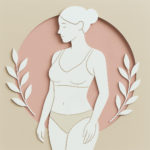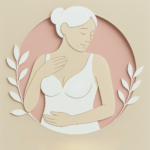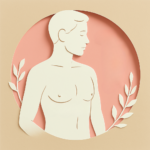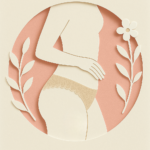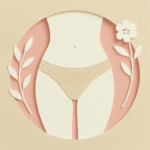Posted on July 2, 2025 in Body
For individuals considering male breast reduction surgery, preparation is an essential part of the overall process. Whether you’re pursuing this procedure due to gynecomastia (a condition where glandular tissue leads to breast enlargement in males) or to address changes after weight loss, it’s vital to approach it well-informed and with realistic expectations. This article offers a practical checklist covering what to expect before male breast reduction surgery, pre-operative tips, and recovery considerations — helping you to navigate each step thoughtfully and safely. What Is Male Breast Reduction Surgery? Male breast ...
Continue Reading
Posted on June 24, 2025 in Body
Achieving significant weight loss is a meaningful personal milestone for many people. Whether through lifestyle changes, medical support, or bariatric procedures, this commitment can bring about substantial health benefits. However, it’s not uncommon for individuals to experience excess skin following considerable weight reduction. This is because the skin, having been stretched for a long period, may not always retract to fit the body’s new shape. As a result, some people seek excess skin removal Sydney procedures to manage this physical concern. This article offers a clear and responsible overview of ...
Continue Reading
Posted on June 20, 2025 in Face, Uncategorized
Deciding to undergo a rhinoplasty procedure in Sydney is a significant and personal decision. Whether your goals are functional, aesthetic, or both, selecting a qualified and experienced surgeon is one of the most important steps you’ll take in your surgical journey. With so many options available, understanding how to choose a rhinoplasty surgeon can feel overwhelming. However, taking the time to carefully research and consult with professionals ensures you make an informed and considered decision. This article will outline what to look for in a nose job surgeon in Sydney, ...
Continue Reading
Posted on June 4, 2025 in Breasts, Uncategorized
For many transgender women, gender affirming breast surgery can be a meaningful step in aligning physical appearance with gender identity. In Australia, including at practices offering gender affirming surgery in Sydney, this procedure is approached with clinical precision and careful planning, ensuring patients are fully informed about what it involves, the possible risks, and realistic outcomes. If you’re considering MTF breast augmentation, it’s important to understand what the procedure involves, how to prepare, and what the recovery process typically looks like. What Is MTF Breast Augmentation? MTF breast augmentation is ...
Continue Reading
Posted on May 28, 2025 in Body
Understanding Masculinising Chest Surgery For individuals seeking gender affirming chest surgery through the removal of breast tissue and reshaping of the chest area. This procedure, commonly known as masculinising chest surgery, is a significant step for many transgender and non-binary individuals in aligning their physical appearance with their gender identity. The surgery involves several techniques tailored to individual needs, ensuring a natural and balanced outcome. The Chest Masculinisation Surgery Process The chest masculinisation surgery process begins with an in-depth consultation with a qualified surgeon who specialises in gender-affirming procedures. During ...
Continue Reading
Posted on May 21, 2025 in Breasts
For individuals considering breast surgery and future pregnancies, timing is an essential factor in making an informed decision. A breast lift, or mastopexy, is a procedure that addresses changes in breast shape and position. However, those planning to have children may wonder whether planning a breast lift before pregnancy is the right choice or if delaying the procedure is more beneficial. Understanding the relationship between mastopexy and pregnancy can help determine the most suitable approach. Understanding a Breast Lift and Its Purpose A breast lift is a surgical procedure that ...
Continue Reading
Posted on May 13, 2025 in Body
Abdominoplasty is a surgical procedure designed to address excess skin and tissue in the abdominal area. It is often sought by individuals who have experienced significant weight loss or changes in body composition due to pregnancy or ageing. However, weight fluctuations before or after the procedure can influence both the short-term and long-term results. Understanding the relationship between weight stability and abdominoplasty outcomes is essential for those considering this procedure. How Weight Changes Affect Abdominoplasty Outcomes Weight stability is an important factor in determining the long-term success of abdominoplasty. Those ...
Continue Reading
Posted on May 6, 2025 in Body
Childbirth brings numerous changes to the body, many of which are natural and expected. However, some of these changes, such as those affecting the labia, can lead individuals to explore medical options for comfort and functional concerns. Labiaplasty after childbirth is a procedure that some consider to address physical changes that occur post-pregnancy. Understanding the potential benefits, timing, and considerations involved in this procedure can help individuals make informed decisions about their post-pregnancy care. Understanding Changes in the Labia After Pregnancy Pregnancy and childbirth can lead to several changes ...
Continue Reading
Posted on April 29, 2025 in Face
As men become increasingly interested in aesthetic procedures, the choice between surgical vs non-surgical eyelid lift options has gained prominence. The eyes are a defining facial feature, and concerns such as excess skin or puffiness can contribute to a tired or aged appearance. While some men opt for men’s eyelid surgery in Sydney, others prefer non-invasive alternatives. This article explores the key differences between these approaches, outlining what each entails, expected recovery times, and suitability for different individuals. Understanding Surgical Eyelid Lift for Men A surgical eyelid lift, also ...
Continue Reading
Posted on April 23, 2025 in Face
Facial feminisation surgery (FFS) is a significant step for many individuals seeking facial harmony through surgical adjustments to bone and soft tissue structures. A crucial aspect of the journey is understanding facial feminisation recovery, including the healing timeline, post-operative care, and strategies for managing discomfort. This article provides an overview of facial feminisation aftercare, the healing process facial surgery requires, and tips for managing pain and recovery in facial feminisation. The Initial Recovery Period: What to Expect Immediately after surgery, patients typically experience swelling, bruising, and discomfort as the body ...
Continue Reading
